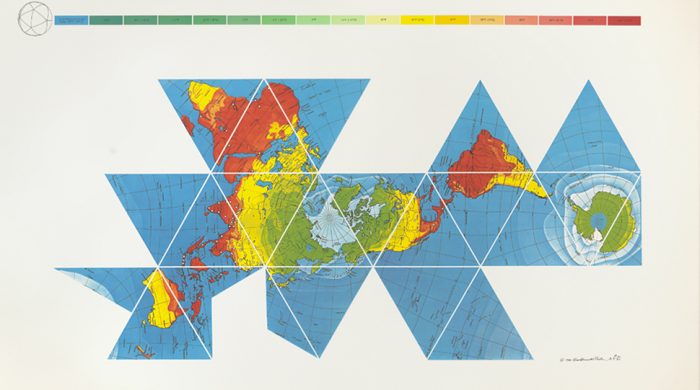

In 2017, an innovative world map emerged, claiming to be more accurate than any previous design. Created by Japanese architect and artist Hajime Narukawa, this map, known as the AuthaGraph, earned Japan’s Good Design Grand Award for its clever approach to representing global geography.
However, some astute observers noted the striking resemblance between the AuthaGraph and an earlier map devised by the visionary theorist and designer Buckminster Fuller. In 1943, Fuller introduced his Dymaxion Map, showcasing a unique perspective of our planet as one interconnected entity without the usual distortions in size and shape seen on traditional maps.
While it remains uncertain whether Narukawa drew inspiration from Fuller’s work, it’s clear that the Dymaxion Map, created 73 years prior to the AuthaGraph, shared a similar vision and purpose. Fuller believed in visualizing the Earth accurately to foster global understanding and collaboration among nations.
Fuller’s map, published in Life magazine, aimed to provide a comprehensive view of the world, helping individuals grasp the planet’s interconnectedness in order to navigate the challenges of the future effectively.
Fuller’s impact extended beyond just the field of map design; his holistic approach to architecture, design, and systems theory inspired a generation of thinkers to adopt new perspectives. He saw himself as an “anticipatory design scientist,” offering tools that could lead to transformative ways of thinking.
Thanks to Fuller’s innovative spirit, his Dymaxion Map sparked a revolution in mapping, with various interpretations and applications emerging over the years. From unique thematic maps like the Cryosphere to interactive digital versions like the Googlespiel, Fuller’s legacy continues to shape the way we perceive and represent our world.
One notable homage to Fuller’s Dymaxion Map is the Dymaxion Woodocean World map by Nicole Santucci, a winner of the DYMAX REDUX competition. This event encouraged artists to create fresh interpretations of Fuller’s iconic map, resulting in a diverse collection of submissions that highlighted the beauty and complexity of our planet from unique perspectives.
Fuller’s enduring influence and forward-thinking approach challenge us to reimagine traditional boundaries and embrace innovative ways of visualizing our world. His belief in the power of design to shape collective consciousness continues to inspire new generations of creative thinkers and problem solvers.
Related Content:
Japanese Designers May Have Created the Most Accurate Map of Our World: See the AuthaGraph
A Harrowing Test Drive of Buckminster Fuller’s 1933 Dymaxion Car: Art That Is Scary to Ride
The Life & Times of Buckminster Fuller’s Geodesic Dome: A Documentary
Buckminster Fuller Tells the World “Everything He Knows” in a 42-Hour Lecture Series (1975)
Bertrand Russell & Buckminster Fuller on Why We Should Work Less, and Live and Learn More
Josh Jones is a writer and musician based in Durham, NC. Follow him at @jdmagness



